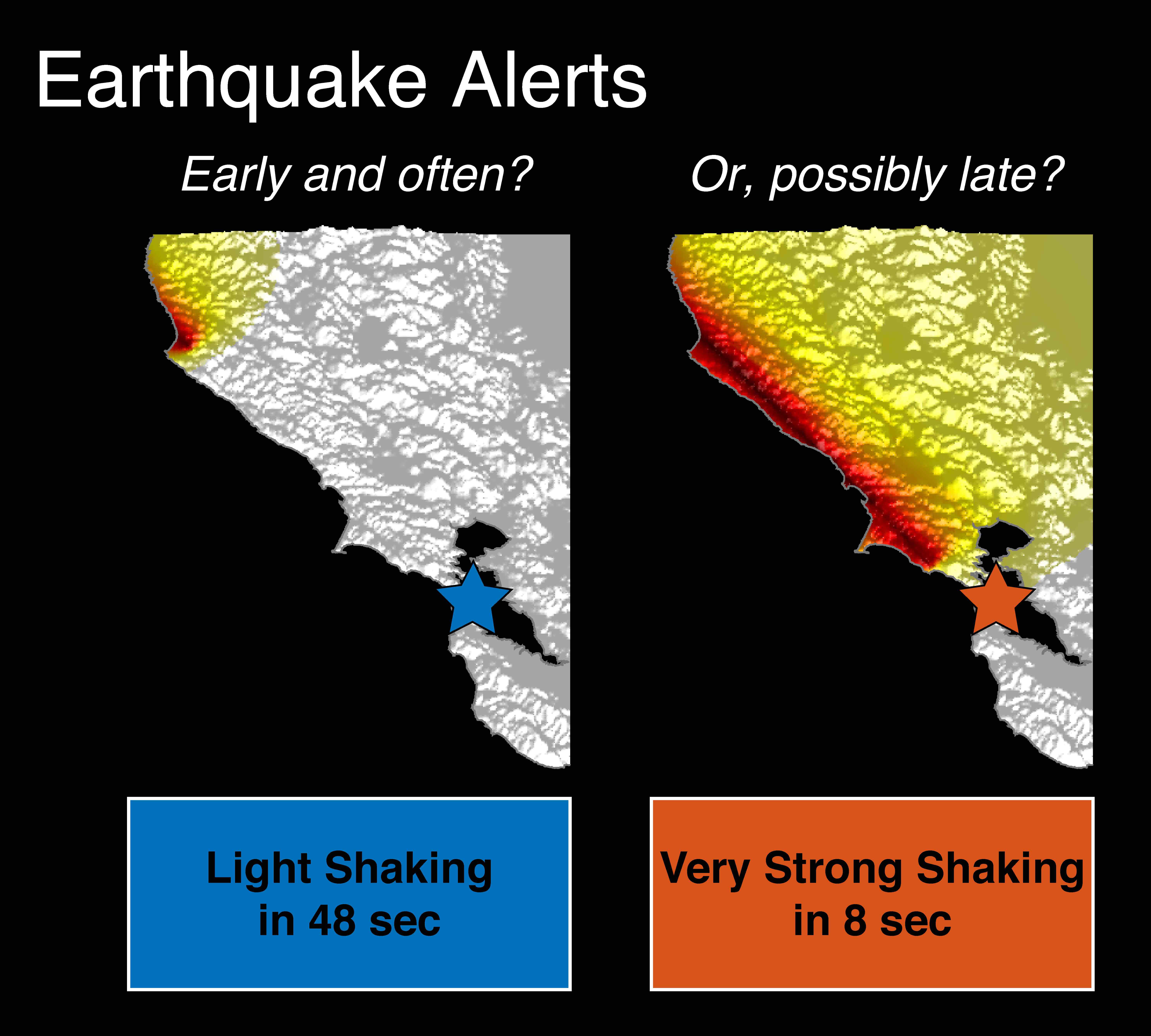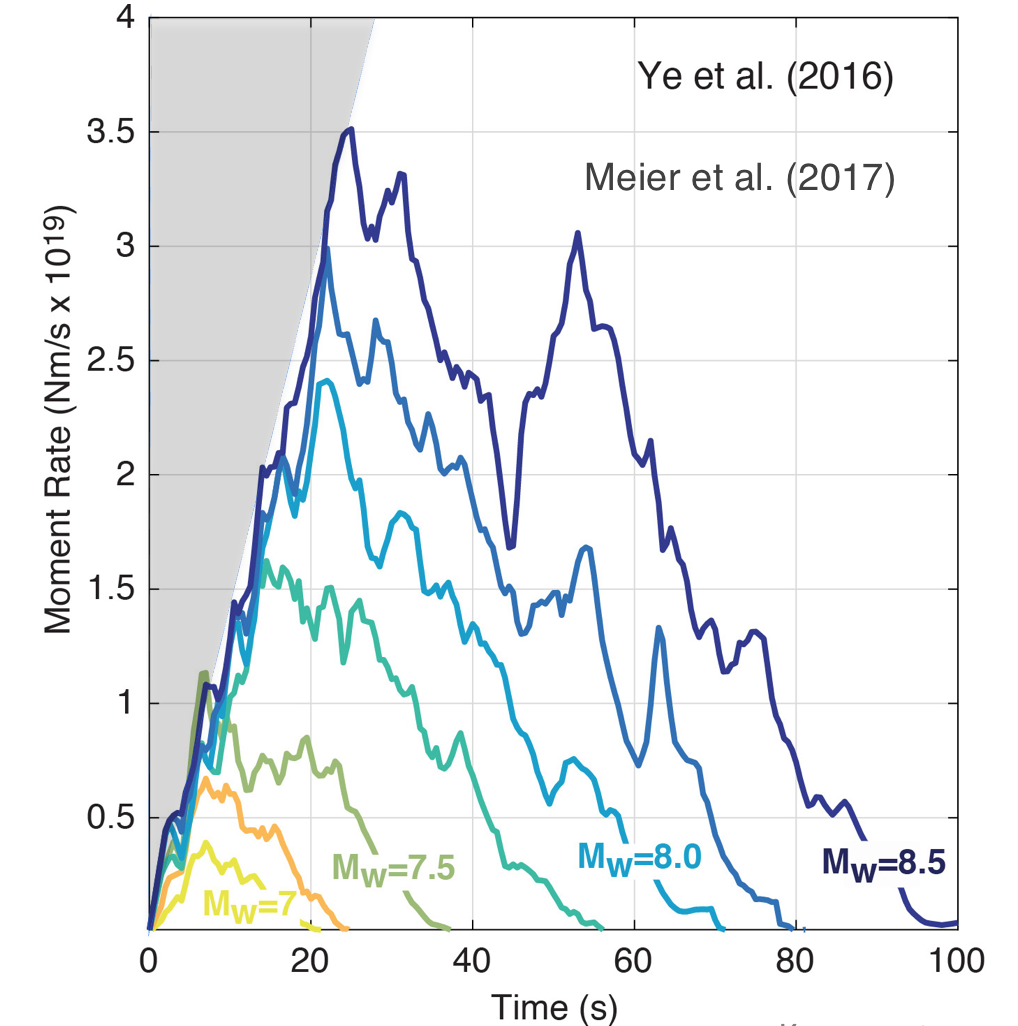By David Jacobson, Temblor
Click here to protect yourself from natural disasters

Today, a study released by USGS and Cal Tech scientists in Science Advances outlined a clear reality regarding the future of earthquake early warning: In order to give sufficient warning, the shaking threshold for the alert has to be set very, very low. This means that while earthquake early warning has the potential to save lives, getting alerts comes at more than a monetary cost. Using a lower shaking threshold to trigger alerts means the majority of alerts you receive will not be followed by strong shaking, and in some cases shaking will be imperceptible.
Could stronger shaking thresholds be used?
While a stronger level of shaking could be used to trigger alerts, doing so would only increase the “blind zone,” the area in which no warning can be given. Therefore, if you only want to be warned when there will be strong ground shaking, you will almost never be forewarned. And, according to Dr. Annemarie Baltay, one of the authors of the study, “You have to assume that a missed earthquake is worse than a false alarm.”
The animation below shows a scenario in which an earthquake begins in Northern California along the San Andreas Fault and propagates towards San Francisco. As the animation progresses, one can see that the more time you wait to see if an earthquake will produce significant ground shaking, the shorter your warning time will be. Therefore, one has to ask themselves, do they want more time, where there is the potential shaking won’t be severe, or do they want less time, or even no time before strong shaking begins?

The figure above graphically displays approximate warning times for both very light and moderate shaking. It should be noted that these warning times assume ideal conditions, and that in a real-world scenario, warning times may be slightly less. Nonetheless, what is highlighted is that if you only want a warning for stronger levels of ground shaking, you will rarely receive one, and even when you do, the warning time will be extremely minimal. One of the reasons why this is the case is because from the moment an earthquake ruptures, it takes time to determine what its magnitude will be. The modified figure below from Meier et al., 2017 shows that the signals from large magnitude earthquakes initially appear almost identical.

“We can get long warning times”
Even though these figures illustrate that only receiving a warning due to an impending large magnitude earthquake is unlikely, there is also great optimism about what can be done. “We can get long warning times and that is a good thing,” Dr. Baltay said. By using lower thresholds, such as 5% g, warning times exceeding 10 seconds can be achieved, and that if an an even lower threshold were to be used, 2% g, warning times could reach 25 seconds. This is more than enough time for people to move to safer areas, or for commercial operations to be shut down. The key now is to set expectations for the system, which is set for limited public rollout later this year, and to demonstrate that what is seen in Hollywood movies only happens in Hollywood.
A teachable moment, not a false alarm
One of the key messages Dr. Baltay conveyed to us is that the authors want to “encourage people to take action at lower levels of shaking.” While to some, receiving an alert and then feeling no shaking may seem like an inconvenience, it could also be viewed as preparation for what we should do in the event of an earthquake. In a sense, these so-called “false alarms” could help us build the muscle memory of what we’ll need to do to protect ourselves in the moments before an earthquake strikes. While many people know that the safest thing to do in an earthquake is to drop, cover, and hold on, you don’t know how you will react until you are faced with the real thing.
References
Sarah E. Minson, Men-Andrin Meier, Annemarie S. Baltay, Thomas C. Hanks, Elizabeth S. Cochran, The Limits of Earthquake Early Warning: Timeliness of Ground Motion Estimates. Science Advances 21 Mar 2018 Link
M.-A. Meier, J. P. Ampuero, T. H. Heaton, The hidden simplicity of subduction megathrust earthquakes, Science 357, 1277–1281 (2017) 22 September 2017
- Beware quiet segments of the Philippine Fault - May 16, 2025
-
ډیری عوامل افغاني ټولنې د زلزلې پر وړاندې زیانمنوي
- August 11, 2022 - What’s happening this week in Humboldt County, California: The squeeze - February 6, 2019
